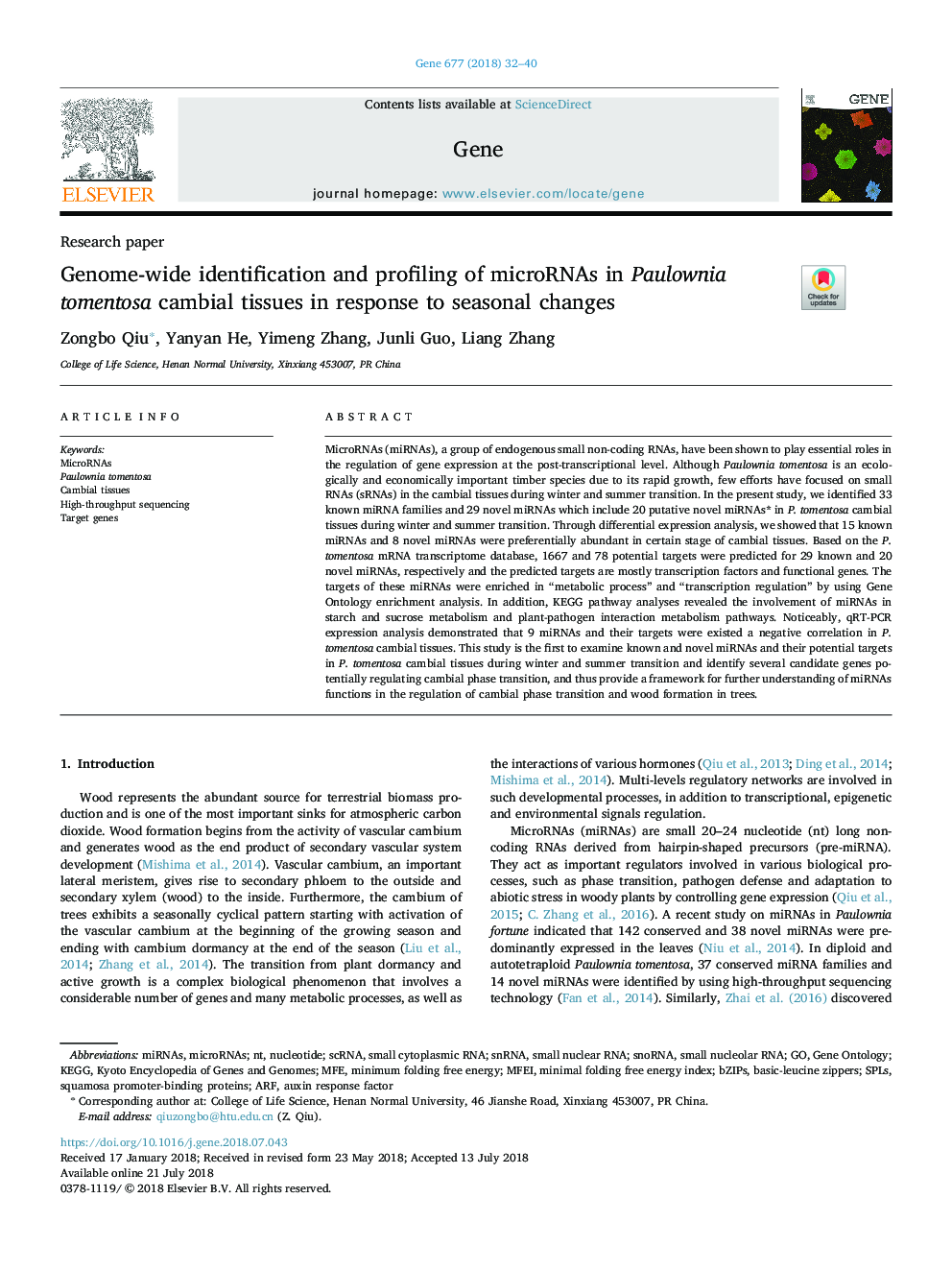| Article ID | Journal | Published Year | Pages | File Type |
|---|---|---|---|---|
| 8644402 | Gene | 2018 | 9 Pages |
Abstract
MicroRNAs (miRNAs), a group of endogenous small non-coding RNAs, have been shown to play essential roles in the regulation of gene expression at the post-transcriptional level. Although Paulownia tomentosa is an ecologically and economically important timber species due to its rapid growth, few efforts have focused on small RNAs (sRNAs) in the cambial tissues during winter and summer transition. In the present study, we identified 33 known miRNA families and 29 novel miRNAs which include 20 putative novel miRNAs* in P. tomentosa cambial tissues during winter and summer transition. Through differential expression analysis, we showed that 15 known miRNAs and 8 novel miRNAs were preferentially abundant in certain stage of cambial tissues. Based on the P. tomentosa mRNA transcriptome database, 1667 and 78 potential targets were predicted for 29 known and 20 novel miRNAs, respectively and the predicted targets are mostly transcription factors and functional genes. The targets of these miRNAs were enriched in “metabolic process” and “transcription regulation” by using Gene Ontology enrichment analysis. In addition, KEGG pathway analyses revealed the involvement of miRNAs in starch and sucrose metabolism and plant-pathogen interaction metabolism pathways. Noticeably, qRT-PCR expression analysis demonstrated that 9 miRNAs and their targets were existed a negative correlation in P. tomentosa cambial tissues. This study is the first to examine known and novel miRNAs and their potential targets in P. tomentosa cambial tissues during winter and summer transition and identify several candidate genes potentially regulating cambial phase transition, and thus provide a framework for further understanding of miRNAs functions in the regulation of cambial phase transition and wood formation in trees.
Keywords
ARFsmall cytoplasmic RNAscRNAMinimal folding free energy indexPaulownia tomentosaSPLSMFEImiRNAssnoRNAsnRNAMFEsmall nuclear RNAsmall nucleolar RNAHigh-throughput sequencingKEGG یا Kyoto Encyclopedia of Genes and Genomes Kyoto Encyclopedia of Genes and GenomesmicroRNAsAuxin response factorNucleotideGene ontologyTarget genes
Related Topics
Life Sciences
Biochemistry, Genetics and Molecular Biology
Genetics
Authors
Zongbo Qiu, Yanyan He, Yimeng Zhang, Junli Guo, Liang Zhang,
